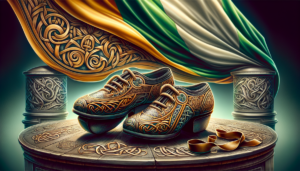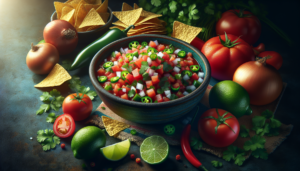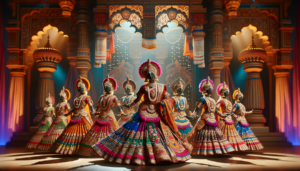Merengue, a vibrant and lively dance and music genre, has captivated audiences worldwide with its infectious rhythms and joyful spirit. Originating from the Dominican Republic, merengue has become a cultural symbol, embodying the essence of Dominican identity and pride. This guide explores the rich history, distinctive music, and energetic dance steps that define merengue, providing insights into its enduring popularity and cultural significance.
Introduction to Merengue
What is Merengue?
Merengue is a musical genre and dance style that originated in the Dominican Republic. It is characterized by its lively, upbeat tempo and a distinctive two-step dance pattern. The merengue music typically features a combination of percussion instruments, such as tambora and güira, along with the diatonic accordion, which adds a unique melodic element to the sound.
Merengue is more than just a form of entertainment; it is deeply ingrained in Dominican culture and is often associated with festivities, celebrations, and social gatherings. The merengue dance is known for its simplicity and accessibility, making it easy for people of all ages and skill levels to participate and enjoy.
Origins and History of Merengue
The exact origins of merengue are somewhat debated, but it is believed to have emerged in the Dominican Republic during the mid-19th century. One popular theory suggests that merengue evolved from the blending of African rhythms brought by enslaved people and European influences from Spanish colonizers.
Throughout its history, merengue has undergone various transformations and adaptations. In the early 20th century, merengue experienced a significant evolution, transitioning from its rural roots to a more refined and polished sound. The introduction of brass instruments and the incorporation of big band arrangements contributed to the modernization of merengue music.
The popularity of merengue spread beyond the borders of the Dominican Republic, particularly in the 1960s and 1970s, when large numbers of Dominicans migrated to the United States, especially to New York City. This migration played a crucial role in the globalization of merengue, as it introduced the genre to new audiences and influenced the development of other Latin music styles.
Merengue Music
Key Instruments in Merengue
Merengue music is characterized by its distinct instrumentation, which contributes to its lively and energetic sound. The diatonic accordion is a central instrument in traditional merengue, providing the melodic foundation and the genre’s signature sound. The accordion is often accompanied by percussion instruments, such as the tambora, a two-headed drum, and the güira, a metal scraper.
In modern merengue, the instrumentation has expanded to include a wider range of instruments, such as brass sections, electric guitars, and keyboards. These additions have brought new dimensions and variations to the traditional merengue sound, allowing for greater musical experimentation and fusion with other genres.
Distinctive Rhythms and Patterns
One of the defining characteristics of merengue music is its distinctive rhythmic patterns. The most prominent rhythm is known as the quintillo, a five-note pattern that creates a lively and syncopated feel. This rhythmic pattern is typically played on the tambora and serves as the backbone of the merengue sound.
The güira also plays a crucial role in merengue, providing a constant scraping sound that adds texture and drive to the rhythm. The combination of the tambora and güira creates a powerful and infectious groove that compels listeners to move and dance.
Famous Merengue Songs
Throughout its history, merengue has produced numerous iconic songs that have become cultural touchstones and dance floor favorites. One of the most famous merengue songs is “Compadre Pedro Juan” by Luis Alberti, which has been covered and reinterpreted by various artists over the years.
Another notable merengue hit is “Suavemente” by Elvis Crespo, which gained international recognition and became a global sensation in the late 1990s. The song’s catchy melody and irresistible dance rhythm showcased the universal appeal of merengue music.
| Song Title | Artist | Year |
|---|---|---|
| Compadre Pedro Juan | Luis Alberti | 1950s |
| Suavemente | Elvis Crespo | 1998 |
| Abusadora | Oro Solido | 1996 |
Merengue Dance
Basic Steps and Movements
The merengue dance is known for its simplicity and accessibility, making it easy for beginners to learn and enjoy. The basic step involves a two-step pattern, where the dancer steps to the side and then closes their feet together. This pattern is repeated in time with the music, creating a smooth and flowing movement.
As dancers become more comfortable with the basic step, they can incorporate additional movements and variations, such as turns, spins, and arm flourishes. The upper body remains relatively still, with the hips and legs doing most of the work. The dance is typically performed in a close embrace, with partners holding each other in a ballroom-style position.
Cultural Significance of Merengue Dance
Merengue dance holds a special place in Dominican culture and is often considered the national dance of the Dominican Republic. It is a symbol of national pride and identity, reflecting the vibrant spirit and joy of the Dominican people.
Merengue dance is not only a form of entertainment but also a means of social interaction and bonding. It brings people together, regardless of age, social status, or background, creating a sense of unity and shared experience. Merengue festivals and competitions are popular events that showcase the skill and passion of dancers from all walks of life.
Merengue in Modern Culture
Influence on Other Music Genres
Merengue has had a significant impact on various music genres, both within the Latin American context and beyond. Its infectious rhythms and lively spirit have influenced the development of other popular Latin dance styles, such as salsa and bachata. Merengue elements can be heard in the works of many Latin artists who incorporate the genre’s distinctive rhythms and instrumentation into their music.
Moreover, merengue has also left its mark on non-Latin genres, such as rock, pop, and electronic dance music. Artists from diverse backgrounds have drawn inspiration from merengue, incorporating its rhythms and energy into their own musical creations. This cross-pollination has led to the emergence of new fusion styles and has helped to expand the reach and appeal of merengue beyond its traditional boundaries.
Popular Merengue Artists
Over the years, numerous merengue artists have risen to prominence, captivating audiences with their unique styles and contributions to the genre. Some of the most notable merengue artists include:
- Los Hermanos Rosario: This legendary Dominican band has been a driving force in merengue music since the 1980s, known for their energetic performances and hit songs.
- Toño Rosario: As a former member of Los Hermanos Rosario, Toño Rosario embarked on a successful solo career, becoming one of the most renowned merengue singers of his generation.
- Oro Solido: This popular merengue band gained international recognition in the 1990s with their innovative style and chart-topping hits.
Merengue in the Digital Age
In the digital age, merengue has found new avenues for exposure and consumption. Music streaming platforms and online video sharing sites have made merengue music more accessible than ever before, allowing fans from around the world to discover and enjoy the genre’s rich catalog of songs.
Social media has also played a significant role in promoting merengue culture. Dancers and enthusiasts share their performances, tutorials, and experiences online, fostering a global community of merengue lovers. This digital presence has helped to preserve and celebrate the legacy of merengue, ensuring that its spirit and traditions are passed on to new generations.
Conclusion
Merengue is more than just a music genre or a dance style; it is a vibrant expression of Dominican culture and identity. From its humble beginnings to its global popularity, merengue has captivated audiences with its infectious rhythms, lively dance steps, and joyful spirit.
Through its evolution and influence on other genres, merengue has left an indelible mark on the world of music and dance. Its ability to bring people together, regardless of background or skill level, is a testament to its enduring appeal and cultural significance.
As merengue continues to evolve and adapt in the modern era, it remains a cherished and celebrated art form, connecting generations and communities through the power of music and dance. Whether on the dance floor, at festivals, or in the digital realm, merengue will undoubtedly continue to thrive, spreading joy and unity wherever its rhythms are heard.






